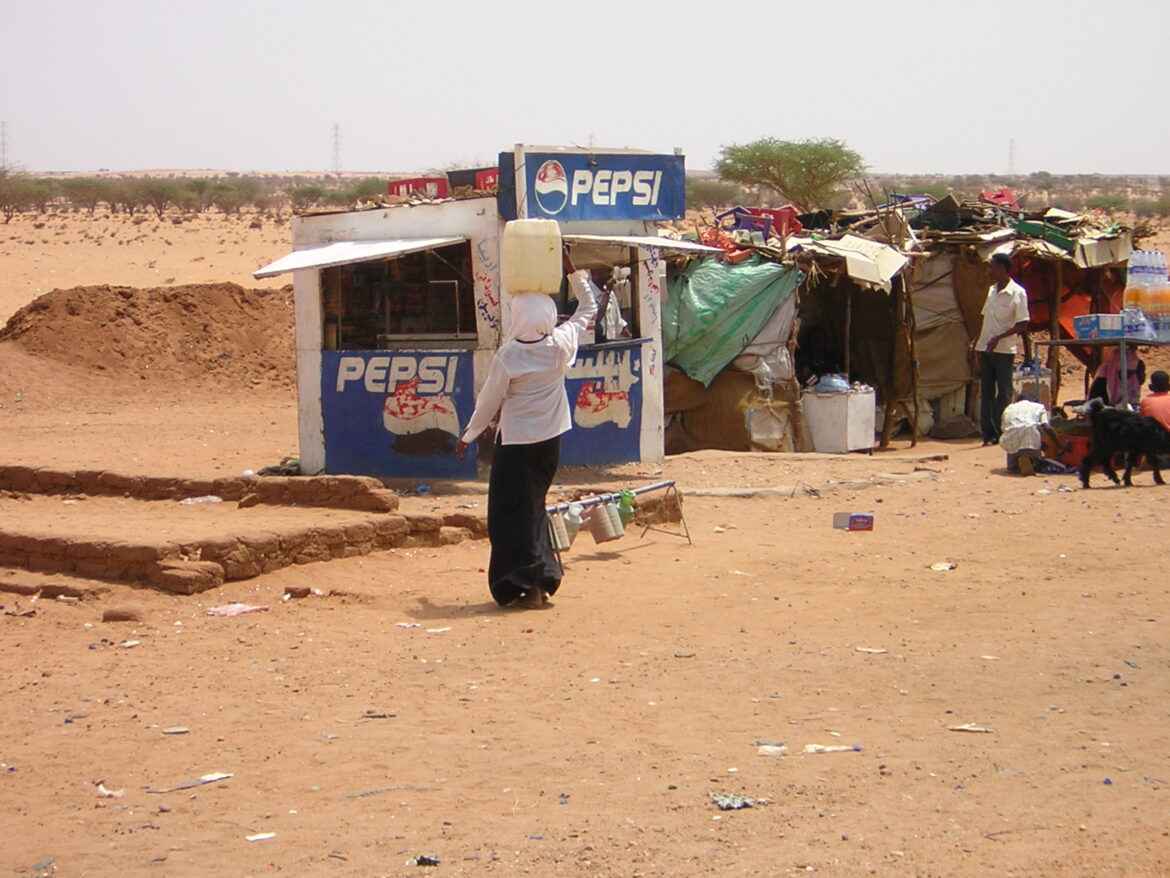Following the outbreak of conflict in April 2023 between the Sudanese Armed Forces (SAF) and Rapid Support Forces (RSF), the country has been pushed further into an already existing dire state of affairs. Precisely, Sudan is facing an alarming food insecurity crisis. While hunger levels already skyrocketed in recent years, the ongoing crisis has further aggravated the situation, leaving more than 6 million people on the verge of famine, while 20.3 million individuals, accounting for 42 percent of the population, are facing acute food insecurity.
According to the recent IPC Integrate Food Security Phase Classification Report, the regions most affected, including Khartoum, South and West Kordofan, as well as Central, East, and West Darfur, are witnessing high levels of violence in the face of a humanitarian crisis. The ongoing conflict, which has displaced over four million people and caused critical infrastructure damage, has had devastating consequences on the food security of millions of Sudanese families. Adam Yao, FAO deputy representative in Sudan, even says during a press conference in Geneva, “the food situation in the country is alarming.”
In fact, the destruction and damage inflicted upon markets in Sudan paint a grim picture of the ongoing conflict. These markets, vital economic hubs for the local population, have suffered immensely, leaving behind a trail of catastrophe.
Take, for example, the central market in Khartoum North, which was engulfed in flames during clashes between the SAF and RSF in April 22nd. This incident alone resulted in significant damage and loss.
Tragically, the destruction did not stop there. On May 1st, airstrikes targeted the Al Shaby Omdurman market, where the RSF was stationed. The repercussions were devastating, further exacerbating the plight of the already vulnerable Sudanese families.
A ceasefire may seem attractive for Western countries like the United States. In practice, it does not work, especially in the case of Sudan. In the face of a ceasefire agreement, the Souk Sitta (Market Six) in southern Khartoum fell victim to rocket fire on June 1st during fighting between the conflicting military factions. The impact of such acts of violence is far-reaching, leaving the local population in despair and struggling to access essential goods and services.
It is essential to emphasize the significance of these markets as not just economic hubs, but also as lifelines for countless Sudanese families. These markets provide access to food, commodities, and essential services that are now more challenging to obtain due to the destruction they endure through this crisis.
Meanwhile, humanitarian agencies have made commendable progress in reaching vulnerable populations in Sudan’s most inaccessible and remote regions. For example, successful efforts have reached regions such as East Darfur, North Darfur, South Darfur, West Darfur, North Kordofan, Jebel Aulia in Khartoum, and other locations. These efforts resulted in over 3.7 million people receiving life-saving aid, including food, shelter, nutrition, protection, water, and hygiene assistance since the outbreak of the crisis in April.
Despite the accomplishments made, insufficient resources continue to impede humanitarian efforts to address the situation effectively. Why? Because the resources allocated to address Sudan’s crisis fall far short of what is required. The Office for the Coordination of Humanitarian Affairs (OCHA) asserts that the chronic lack of funding is exacerbating the suffering of Sudanese families grappling with this crisis, leaving them without necessary essentials to survive.
As such, the United Nations Food and Agriculture Organization (FAO) recently requested an additional 65 million U.S. dollars in funding to assist over six million people and support farmers in preparing for the upcoming planting season. Without adequate financial support, the situation is likely to worsen, with projections indicating that around 15 million people could face a food crisis from October 2023 to February 2024.
Hence, the scale of the crisis demands that more be done. IOM Director of the Department of Operations and Emergencies, Frederico Soda, stresses that as needs continue to rise, the international community needs to “support relief efforts and help ensure life-saving aid is delivered before it’s too late.” Adequate funding, diplomatic engagement, and humanitarian support are essential to address the immediate needs of the population, alleviate suffering, and pave the way for a more stable and prosperous future for Sudan.
Edited by Misbah Lalani
Victoria Forte is in her third and final year at McGill University, where she is completing her B.A. in Political Science and Gender, Sexuality, Feminist, and Social Justice Studies. As she navigates her final year, Victoria brings a fresh perspective as a new staff writer for Catalyst. Her academic and journalistic pursuits are driven by a deep interest in exploring the intersections of power, identity, and social justice.

